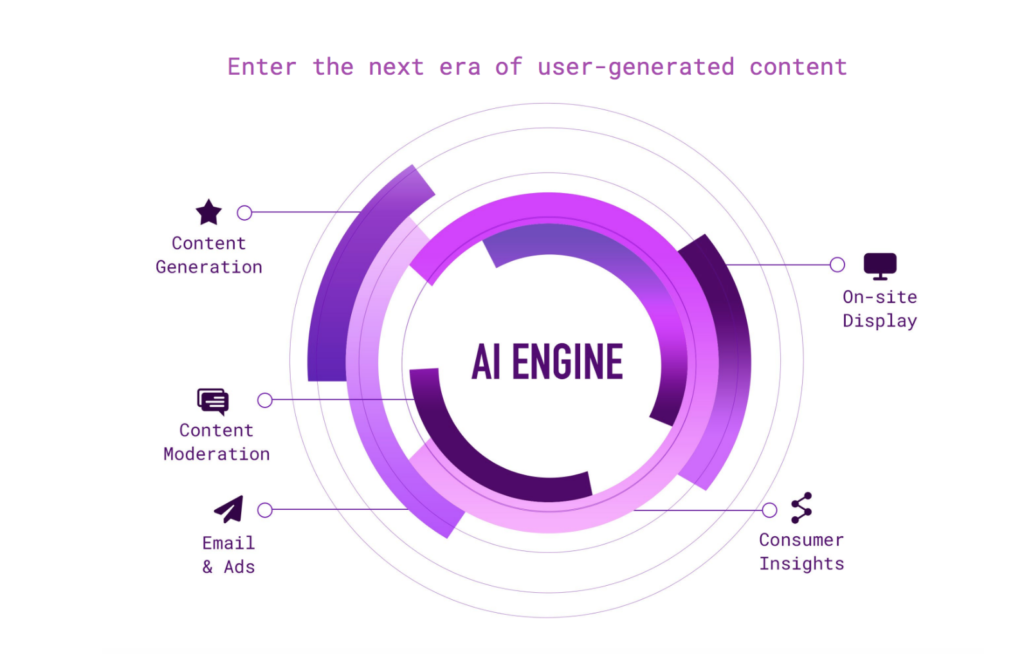The ubiquity of eCommerce has created a phenomenon similar to the one that bred the Mad Men era of advertising in the ‘50s. Suddenly, online competition is everywhere, and it’s up to brands to differentiate themselves on more than just product in order to get noticed.
But history is not quite repeating itself. The rulebook for differentiation has changed. If advertising agencies once gave brands an edge with witty slogans and compelling design, now, businesses are no longer doing the marketing — their customers are.
Introducing the new growth paradigm for brands
In the new growth paradigm, brands can’t afford to live by the “if you build it (and advertise it), they will come” model. Instead, the most successful brands build values, products, and customer experiences with the goal of appealing to their target audience, and they rely on that audience to share their thoughts with like-minded peers. The ensuing flood of recommendations facilitates a brand community.
The benefits of that community are threefold:
- It exposes brands to “look-alike” new potential customers via authentic and convincing word-of-mouth marketing
- It creates a strong emotional connection to the brand, spurring loyalty and repeat purchasing
- It provides a source of relevant, specific feedback
This has been the model used by the fastest-growing brands that have cropped up in the eCommerce ecosystem over the last few years. Take a much-loved example of the ultimate modern brand: Glossier.
Glossier sought to be the brand that emphasized skincare over makeup, filling a gap in the beauty market. They tailored their products to the exact specifications of the audience on the popular Into The Gloss blog that preceded the brand. They also created purchase, unboxing, and pop-up shop experiences designed to dazzle customers and create a buzz on social.
Within six weeks of launching, Glossier announced $8.4 million in Series A funding. Last year, they reported 300% growth in sales. This year, they announced a $52 million funding round. And their 1.2 million Instagram followers are constantly sharing and tagging their products, propelling their explosive growth even further.
That kind of growth and virality on social is only possible through the recommendations of customers and brand fans. An Ogilvy, Google, and TNS study found that 74% of consumers say word-of-mouth is a key influencer on their purchase decision.
Even now, four years after Glossier’s launch, the brand is still the go-to destination for innovative, design-forward beauty products. Developing that kind of brand recognition and category domination requires the exponential growth of the community that originally spread the brand gospel. And maintaining cult status requires the loyalty and engagement of that community.
How content powers community
Customer communities are cultivated through the creation and sharing of user-generated content, including product reviews, business reviews, and photos. If you look at a brand like GoPro, their entire social presence and a huge portion of their website is dedicated to customer photos and videos. Visitors can like or share their favorites, view the “videos of the day,” and even take part in a contest for the best content.
While GoPro does this on a massive scale, the strategy is effective for brands of all sizes. Content from past customers is attractive because it showcases social proof, allowing target shoppers to see that other people like them have purchased a particular product. And seeing that product in action as part of people’s daily lives keeps the community engaged with it and gives them ideas on how to use it in new ways.
Having a community of brand fans that creates and shares content about your products creates a level of social buzz that can’t be bought. When a new product comes out, GoPro’s 13.7 million-strong Instagram following is quick to post photos and clips along with captions about their experiences with the camera, spreading the news faster than any branded ad could.
User-generated content can be distributed across other channels as well, including on site, through incentivized referral programs, through influencers with relevant followings, and even in ads. Social ads with customer content get noticed by banner-blind consumers because they blend into the organic content users seek out from friends. Using reviews in Facebook Dynamic Product Ads can increase click through rates by up to 3x and decrease cost per click by up to 72%.
The game-changing value of smart content
If getting noticed in the crowded eCommerce space is dependent on UGC, then dramatic growth is dependent on smart UGC.
Personalization, sentiment analysis, and machine learning have changed the way
brands and shoppers interact with content. And as eCommerce becomes more pervasive — projected to reach 10% of all retail sales this year — they’re also becoming more discerning about online experiences.
AI now allows brands additional capability to enhance the experience of customer content and its impact on conversion in turn. It makes it possible to collect more of the most helpful reviews, select only on-brand customer photos, and match that content to the right customers at the right time. In addition to providing social proof for shoppers, smart UGC adds another layer to personalized journeys, allowing brands to differentiate their customer experience with authenticity.

How AI-powered content works
New, smarter ways of collecting user-generated content use conversational interfaces to prompt customers to submit detailed reviews that answer specific shopper questions, making them more relevant and helpful.
The smart review requests do this by showing customers real-time suggestions of topics to cover, like “quality” or “size.” The instant-messaging-style experience makes writing the review seem more like a conversation with a friend than a static form seeking general information.
As a result, these AI-powered review requests successfully encourage customers to write more helpful, topic-rich reviews. In initial tests, they led to a 61% uplift in the prevalence of suggested topics in customer reviews.
When it comes to UGC display, today’s brands also need to meet shopper expectations of getting all the information they’re seeking about a product served up immediately. With AI, brands can automatically display the most relevant review snippets and star ratings to shoppers, giving them the social proof they need at the right time to carry through to purchase right away.
This cycle of smarter content and better purchases also includes another key aspect: AI-powered customer feedback analysis. Direct-to-consumer brands have repeatedly been coming out on top in the new era of eCommerce because they are uniquely positioned to capitalize on customer-centricity. Owning the entire value chain — from product development, to customer experience, shipping, and even marketing — means these brands can make changes quickly. But only if they know what needs to be changed.
The text of customer reviews offers in-depth insights into shopper sentiment in their own words. Whereas structured surveys can help unveil certain information, free text allows customers to raise any topic while giving brands insight into the language used to speak about both positive and negative aspects of their products.
In addition to the clear product development opportunities, marketing teams can also use customer phrases and topic trends to better inform messaging and campaigns, connecting to customers with their own experiences. For example, a brand might learn that a particular set of earrings is most often purchased as a gift for Mother’s Day and create a campaign targeted at the gift buyers rather than at the woman who would be wearing the jewellery.
Similarly, customer service teams can use AI-powered content analysis to get real-time insights on customer concerns, ideas for improving help resources, and a clear understanding of where to focus their efforts. In such a fast-paced industry, this smart feedback loop is what enables brands to reduce lag time and beat the competition.
Takeaways
As more savvy brands begin to recognize the power of user-generated content, the game-changer is shifting from just having UGC to collecting and displaying it smartly. Taking advantage of developments in AI to empower to the content collection, moderation, and display cycle is the only way to stay ahead as the eCommerce landscape becomes increasingly crowded.
Any brand can thrive in the new growth paradigm by:
- Collecting more detail-rich customer content
- Sharing that content exclusively with relevant audiences and in thumb-stopping formats
- Analyzing UGC at scale for product, service, and marketing insight















 Join a free demo, personalized to fit your needs
Join a free demo, personalized to fit your needs